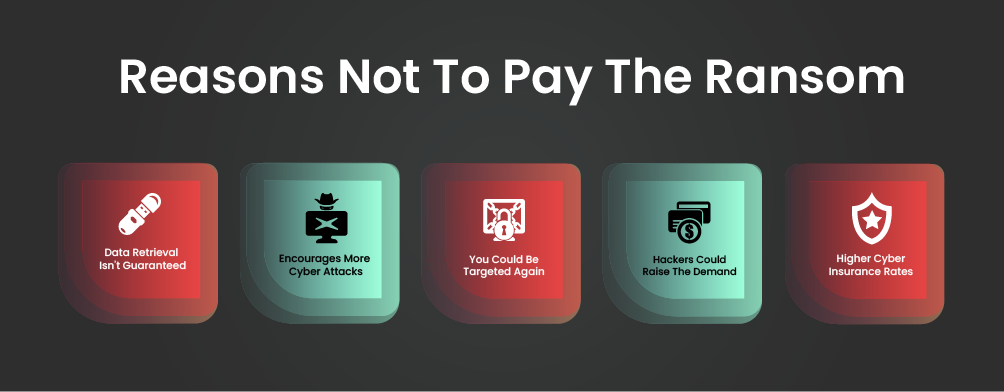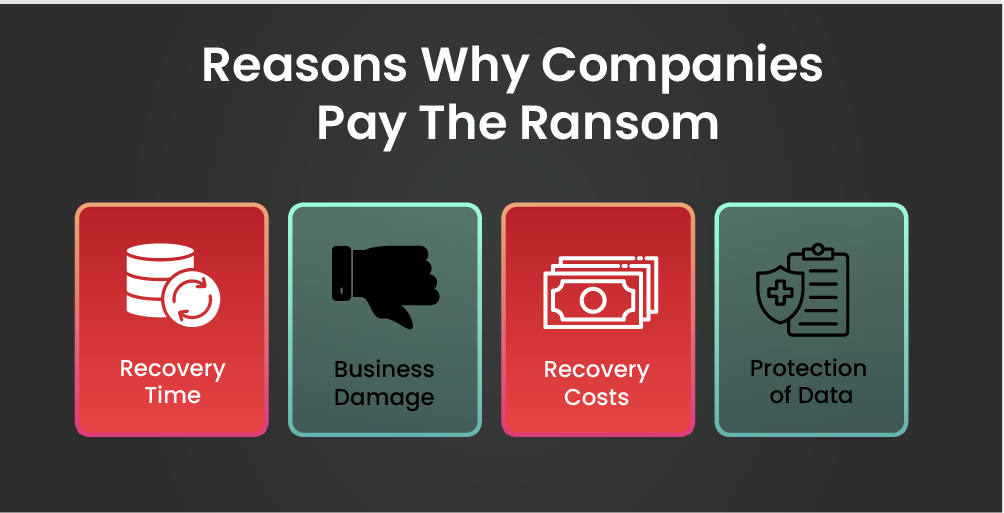Ransomware Payments: to Pay or Not to Pay
February 23, 2024
When ransomware strikes, businesses face a critical decision: comply with the demands or stand firm against extortion. While law enforcement advises against paying, some companies choose to do so.
The stakes are immense. Failure to detect ransomware can lead to the encryption, theft, and public exposure of crucial business data. The financial impact and high ransom demands worsen the situation. Once a ransom demand is made, the organisation is left vulnerable and at the mercy of cybercriminals.
For executives, the decision is daunting: pay the ransom or resist? This choice has significant consequences. In this article, we will explore the complexities of ransomware payments, examining the pros and cons of paying the ransom.
2023 was a significant year for ransomware groups, despite global law enforcement efforts to crack down on attackers.
Palo Alto Networks’ Unit 42 reported a staggering 49% increase in victims on ransomware leak sites, with nearly 4,000 posts documented. Exploiting zero-day vulnerabilities, attacks such as the MOVEit Transfer software breach were attributed to the CL0P Ransomware Gang. These attacks affected over 8,000 organisations worldwide, with the United States being the hardest hit. The manufacturing, professional services, and high-tech industries were among the most impacted sectors.
When confronted with a ransomware attack, the decision to pay the ransom can weigh heavily on business leaders. However, law enforcement agencies worldwide are clear in their stance: paying the ransom only encourages cybercriminals and sustains their illicit activities.

Paying the ransom is akin to playing a dangerous game of chance, with no assurance of success. Once the ransom is paid, hackers hold all the cards, and there’s no obligation for them to uphold their end of the bargain. Moreover, the anonymity of cryptocurrency transactions makes it easy for hackers to disappear with the payment, leaving businesses empty-handed and humiliated.
By giving in to the demands of cybercriminals, businesses inadvertently fuel the cycle of ransom attacks. The funds extracted through ransom payments serve as a financial lifeline for hackers, enabling them to refine their tactics and target even more organisations.
Paying the ransom not only acknowledges the effectiveness of the hackers’ tactics but also paints a target on the victimised business for future attacks. Cybercriminals thrive on perceived vulnerabilities, and a successful ransom payment signals to them that the company is ripe for exploitation. Further attacks are not only likely but may also demand higher sums — the more you give, the more they’ll come back for.
Once ransomware payments are made, there’s no guarantee that the ordeal is over. Hackers may exploit the victim’s willingness to pay by escalating their demands, leading to a never-ending cycle of extortion. Moreover, the lack of ethical constraints means cybercriminals have no qualms about exploiting businesses for financial gain, making it critical for organisations to stand firm against such coercion.
While cyber insurance offers a safety net for businesses struggling with the fallout of ransomware attacks, paying the ransom can have unintended consequences. Not only does it encourage hackers, but it also signals to insurers that the company is susceptible to future attacks, potentially resulting in higher premiums. Despite the allure of insurance coverage, businesses must weigh the long-term implications of paying the ransom. They must balance this against the short-term relief it may provide.
Despite official recommendations against it, some organisations opt to comply and pay the ransom. This is driven by a variety of factors outlined below.

One compelling reason behind the decision to pay the ransom is the desire for quicker recovery. When faced with the prospect of prolonged downtime and excessive recovery costs, some businesses see paying the ransom as a pragmatic solution. In their view, the immediate restoration of critical assets outweighs the potential risks and moral implications.
The disruptive impact of ransomware extends beyond financial losses, often leaving a trail of reputational damage in its wake. For businesses, the public disclosure of a ransomware attack can erode customer trust and confidence, leading to further revenue decline. In a bid to mitigate these adverse effects, some businesses opt to pay the ransom, preferring to keep the incident under wraps.
At its core, the decision to pay the ransom boils down to a cost-benefit analysis for many businesses. When the expenses associated with recovery efforts exceeds the ransom amount, paying up may seem like the best option. In such scenarios, businesses are compelled to weigh the potential repercussions of non-compliance against the financial toll of ransomware-induced disruption.
Cybercriminals often threaten to expose sensitive information unless their demands are met. Faced with the prospect of compromised customer and employee data, some businesses opt to accept the ransom demands. This is seen as a means of protecting their stakeholders’ interests. For these businesses, the potential fallout from data exposure far outweighs the alternative of non-payment.
Ransomware attacks can make businesses fear losing important data or giving in to extortion. However, paying the ransom is rarely the best option. The risks are much greater than any possible benefits, making it crucial to avoid giving in to extortion demands. Still, recovering lost or compromised data is essential.
Fortunately, there are better ways to recover data—ransomware-ready backups. By regularly backing up important files and data, organisations can protect themselves from ransomware attacks, ensuring they have multiple copies available even if some are compromised. These backups act as a safety net, allowing organisations to keep running without having to pay the ransom.
Using a ransomware-protection backup solution helps organisations strengthen their defences, providing strong and secure protection. With a solid backup and disaster recovery plan, organisations can reduce the risks and costs associated with ransomware attacks, protecting their valuable assets from cyber extortion.
The key question remains: to pay or not to pay? Despite strong warnings from law enforcement, some organisations feel compelled to comply, driven by the need for quick recovery or to protect sensitive data. However, the real power to prevent extortion lies in resilience, not in giving in.
Ransomware-ready backups offer a solution. By adopting strong backup solutions and strengthening their defences, organisations can protect their valuable assets against cyber extortion. The choice is clear: fortify or falter, resist or relent. The decision is yours.
Ready to protect your organisation against ransomware attacks? Partner with OneCollab for robust ransomware protection and peace of mind. Book a Discovery Call.
Cyber security shouldn’t be a headache. Get clear and actionable insights delivered straight to your inbox. We make complex threats understandable, empowering you to make informed decisions and protect your business.
Call us +44 20 8126 8620
Email us [email protected]